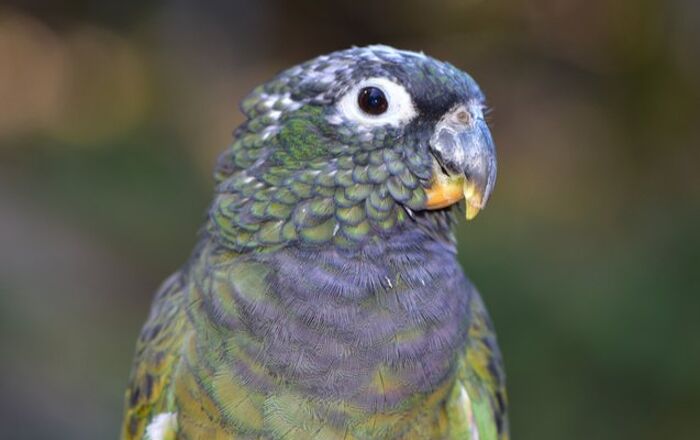Ah, garlic – one of the most favorite veggies in the world, and also one of the healthiest foods we can eat. Sure, it is a bit strong-scented and can leave your breath smelly, but its benefits for your health are immense. But is it the same for dogs? If we can reap the benefits of garlic, can’t they? How should we feel about Dogs and Garlic? Many experts believe that it’s good for your dog’s health. Some say that it’s toxic for dogs. Who is right? The answer might be more complicated than you think.
It is true that many of the common foods and spices that we take for granted are very toxic for dogs. In the past, owners made the mistake and fed such things to their dogs, only to be shocked when things went awry. Luckily, today we have a wealth of information at our fingertips, and such mistakes are not common. Still, the experts are quite divided on the matter of garlic, so we need to dig deeper into this question. There is a lot of controversy surrounding dogs and garlic on the Internet. Many sources believe that garlic is toxic to dogs and it should never be used in dog food. But garlic has been used for centuries as a medicinal aid by humans. It’s undeniable that garlic promotes good health. So what gives? What exactly makes it potentially harmful to doggos?
So is it really true that it’s bad for canines?
The answer may not seem all that cut and dry, but it’s becoming a lot clearer. This is thanks to the research efforts of experts that say that garlic is actually good for dogs. You read that right. New research is showing that garlic can actually be good for dogs despite its deadly reputation. A bit confusing, sure, but modern research can shed some light on past problems. Of course, you can’t just let your dog chew on a clove of garlic straight away, hoping that their immunity will suddenly get boosted to no end. Nope. That’s not what the experts are saying at all. It’s all about the amount of garlic that you give your dog, and the shape in which it is given (after all, garlic can be minced, powdered, whole, fried, picked, and so on). Read on to learn more about dogs and garlic, and how to make it a part of your pup’s healthy diet.
Garlic has been used for centuries as a medicinal aid by humans – is it true that its bad for canines?
Garlic comes from the Allium family, which also includes onions, leeks, chives, and shallots as tasty relatives. Onions, and to a much lesser degree garlic, contains a compound called n-propyldisulfide, as well as small amounts of thiosulphate. When taken in large amounts, oxidative damage can occur in the red blood cells. The effect creates Heinz bodies and the body will reject these cells from the bloodstream. After ingesting large amounts over a long period of time, it can lead to anemia and even death. So, that’s not good. It’s actually quite bad. Does this mean that garlic is unsafe for dogs? That’s where the debate gets heated. The answer is not as simple as it may seem.
Related:Benefits Of Garlic Supplements For Dogs
When did the story of dogs and garlic begin? It all started over 100 years ago, when wild onions (in the same family of garlic) were fed to cattle, sheep, and horses and these animals showed toxicity symptoms. In the 1930s, studies showed that dogs that ate onions showed toxicity symptoms as well. Fast forward to the 1980s: cats that ate onions exhibited the same toxicity symptoms as dogs did. It’s important to note that cats are six to eight times more sensitive to onions than dogs. This article would not exist if we were talking about cats, cause they just can’t eat it whatsoever. That’s a more cut and dry issue. Cats should absolutely avoid anything from the Allium food family. Dogs have a much different sensitivity to onions.
Garlic got a bad rap in 2000, when a research paper was published that was based on garlic’s effect on dogs. Even though the dogs tested didn’t show any outward appearance of toxicity symptoms, there was an effect on the red blood cells. The researchers stated: “we believe that foods containing garlic should be avoided for use in dogs.” From that point on, the rumour spread that garlic could be deadly for dogs. However, that reaction was a little hasty and harsh. Most people read summaries of the study and jumped to conclusions. Reading the results in detail reveals a more complicated story.
Let’s take a closer look into the study itself, not just one quote. This study, which was undertaken at Hokkaido University, was conducted on four dogs. Each of these dogs was given 1.25 ml of garlic extract per kg of body weight for seven straight days. As an example, if the dog weighed 40 pounds, it would be given about 20 cloves of garlic. That’s a staggering amount of garlic that no dog or human would ever actually consume in that time frame! Don’t believe us? Then Calculate how much garlic you’d be eating using that formula. It would be more than enough garlic to make anyone ill. So, from the get go, the research experiment was poorly set up and dogs were given unrealistic amounts of garlic.
Using this ludicrous amount of garlic, the study concluded that garlic had the “potential” to cause hemolytic anemia (damage to the red blood cells), and so garlic should not be fed to dogs. It’s important to note that even at these highly elevated doses, no dogs on the study actually developed hemolytic anemia. The concern was all about potential, not documented results. On top of that, the study included four dogs, so how do you consider this an appropriate sample? That’s a small sample size and more importantly, many breeds of dog respond completely different to certain foods than other breeds. This study is far from broad and definitive. At the very least, this confusion speaks to the importance of looking at all the facts of any given study before jumping to conclusions. There’s a reason why it’s important to look beyond the headline and actually dig into the meat of any study like this.
Related:
Flea Repellent Dog Treat Recipe
Look, too much of anything is bad for you. Even minerals that you assume make you and your dog healthy can be detrimental in large daily amounts. Things such as salt, vitamin D, or Zinc are all good for you… as long as you’re not overdoing it. The same goes with garlic and dogs. On some level, these things all have the potential to be toxic. It’s possible to overdose on anything if you’re really committed to it. Moderation is important.
per day
Fresh Garlic (from The Complete Guide to Natural Health for Dogs and Cats by Dr. Pitcairn)
10 to 15 pounds: .5 clove
20 to 40 pounds: 1 clove
45 to 70 pounds: 2 cloves
75 to 90 pounds: 2.5 cloves
100 pounds +: 3 cloves
Many people choose to stop at the 2 clove mark, even if their dogs is large (75 pounds+). I believe in going with a smaller dose myself and choose fresh over powder or jarred when possible. Also, I rotate my garlic cycle – 1 week on, 1 week off. Some pet parents only use it seasonally, while others feed it every day. The important thing is to find a system that works for you. Not all dogs are created equal. Every pup has it’s own needs.
If your dog has a pre-existing anemic condition or is set to go into surgery, then please don’t give him any garlic. Also, puppies from six to eight weeks of age don’t start to reproduce new blood cells until after 6-8 weeks, so they should not be fed any garlic. Only full grown dogs should be fed garlic in any amount.
The reason why garlic is added to dog food and treats is because it has many health benefits that simply should not be overlooked. Even if you’re not sure about dogs and garlic, and decide to start with a low amount, your dog will still reap significant health rewards. Garlic’s main claim to fame is the benefit it has on a dog’s digestive tract. But there are lots of other wonderful health reasons why dogs and garlic work together. Here are just a few of the doggie garlic benefits:
- Tick/Flea Repellent: Yup, you read that right. Ticks and fleas are the number one nuisance for both dogs and their owners, and garlic can help repel them! It won’t kill the fleas and ticks, but those little buggers don’t like the taste of it. One sniff and they’ll be making their way off your dog. And of course, vampires will stay far away as well. So many blood-sucking benefits! If you had no major luck against these pests with commercial repellents and repelling collars, then maybe it is time to try garlic as a remedy!
- Immune System Boost : Garlic has proven to do wonders for dogs with suppressed immune systems and as well as those fighting cancer. It gives a boost to bloodstream cells that kill bad microbes and cancer cells. (Check out which talks about the benefits of garlic to fight cancer in dogs). So, garlic is an excellent way of boosting any pupper’s immune system in a time of need or helping keep them strong before any of these problems even arrive.Just know when and how much to give.
- Liver Boost: Garlic is known to have detoxifying effects, which can help the liver get rid of toxins from the body. You want your little furry friend’s liver to stay strong and garlic is an excellent way of keeping that organ tough. Toxins in the liver can be present due to various reasons, mostly from different illnesses. During the recovery period, garlic can help get rid of these toxins quicker, and bring your pet back to the healthy stage.
- Fights Bacterial, Viral, and Fungal Infections: Bacteria, virus and fungi are no match for garlic! With its potent antimicrobial and antibiotic properties, it fights parasites and protozoan organisms as well. And here you thought it was little more than a tasty treat! This is especially crucial in the seasons when common viruses are widespread and running wild. Garlic can be such a good preventive measure against them.
- Lowers Blood Cholesterol and Triglyceride: Mix the proper dose of uncooked garlic with your dog’s food and it can help lower blood cholesterol and triglyceride levels. That’s something that will help your pup out quite a bit in the long term. Some obese doggos can have very high cholesterol, and getting it down can be a challenge. Once you get your pet on a diet, try adding some garlic as advised – it can be a drastic help.
- Cardiovascular Boost: Wonderful in older and overweight dogs, garlic can prevent blood clots, and reduce cholesterol levels and fat build up in the arteries. A great way to keep your plus size pup healthy! We all know that in their senior stages, dogs can be vulnerable to a variety of challenges to their health. It is always good to have a bit of a boost to their immune system and a benefit for their fragile old age.
If you have never given your dog garlic before, there is no way to know if he will like it or not. So, how can you start giving your pooch some health-promoting garlic while making sure that he will love it? Well, fresh garlic will provide the most potency, and it is also inexpensive. But, again, it is all about giving your dog the appropriate dose for safety and effectiveness, so you do need to spend the time chopping up the garlic and measuring out the right amount before giving it to your furry companion to try. So, while the price may be right with fresh garlic, there will be significant prep involved.
More than that, not all dogs enjoy eating fresh garlic. In fact, your dog might not be too keen on eating the garlic on its own or in his food if you just suddenly put it in there. Keep in mind that every dog is an individual, so a bit of trial and error might be necessary to figure out how your dog prefers to eat garlic. A good rule of thumb, is to start out feeding your pup the smallest amount possible. Then gradually increase the amount of garlic that you give your dog over the course of a week (or longer) until you have reached the optimal dose. This can help your pooch adjust to the flavor of the garlic, and once he is accustomed to it, it will be a lot easier to give him the right amount on a regular basis. Changing your dog’s diet is a delicate task and should never be done in a rush.
Note:
Remember, you should always work with your veterinarian when you are planning on introducing a new supplement to your dog’s diet, even if it is totally natural garlic. You want to be sure that you are going to give the right amount for your dog’s size and weight, as well as his overall health. It’s a delicate balancing act.
It’s important to realize, too, that garlic is capable of interacting with a lot of medications. A few examples include heart medications, blood thinners, chemotherapy drugs, antacids, insulin, high blood pressure medications, and immune suppressants. So, if your dog is taking a prescription, talk to your veterinarian first to check if it’s safe to give your pooch the garlic supplement.
Also, if you start giving your dog garlic for the first time, watch for any signs that it might not be agreeing with your pet, as well as any signs that you have given him too much. For example, if you start to notice symptoms like pale gums, nausea, vomiting, drooling, oral irritation, diarrhea, abdominal pain, lethargy, elevated respiratory rate, elevated heart rate, exercise intolerance, weakness, or collapse, contact your vet right away. These are all signs that you might’ve overdone it with your garlic dose for your dog and you should make sure that no significant problems have occurred.
I feed Oscar garlic and supplement it into his diet throughout the week. As pet parents, we need to remember that there is no “normal” consumption level. Based on my dog’s weight, I feed my dog safe and beneficial levels of garlic. As with any change in diet or addition of supplement, please speak with your vet. My vet knows about the garlic in Oscar’s diet, and we have blood taken every year to ensure he’s in peak form.
Some of our favorite supplements are Brewer’s Yeast combined with garlic to help give nice healthy skin and coat, plus all the perks listed above. Why don’t you check these out for your pet too?
Only Natural Pet Brewer’s Yeast and Garlic Tablets
These chewable tablets are great for an everyday combination of garlic and brewer’s yeast that will holistically repel fleas and ticks too. Not to fear–only fleas and ticks and other outdoor pests can’t take the smell. To humans and other dogs or cats, Fido and Fifi the feline will smell just fine. They’re holistically created by a veterinarian to be an all-natural repellant for pests, as well as a supplement that supports their skin and coat health.
Want to boost your dog’s immune function? Nutri-Vet’s Brewer’s Yeast Flavored with Garlic Chewables do so with since, copper and manganese. The extra B1, B2, B3 and B12 vitamins help your dog’s cellular function to promote health and they’re and these treats are an excellent source of protein to boot.
They are veterinary-formulated for your dog’s safety and health, and they’re savory treats your dog can take safely every day. In fact, they may just ask for them daily, they’re that delicious.
Formulated by veterinarians in the United States, NaturVet Brewer’s Dried Yeast Formula with Garlic Dog & Cat Powder Supplement has debittered yeast as the ingredients cats and dogs love. There’s 5% garlic for all the health benefits we’ve mentioned, plus it’s fortified with B1, B2, Niacin and Vitamin C as an antioxidant. Antioxidants help minimize the effects of premature aging. The powder makes it easy to administer over kibble or in peanut butter or cream cheese (they’ll really love you) and it also helps support healthy skin and a glossy coat.
These Yeast and Garlic Wafers from PetGuard are perfect as supplements your dog will think are rewards or treats. They’ll strengthen and nourish your pet’s skin and body with protein and essential B vitamins, but your pet will just think they’re a very good boy or girl with these vegan crisps. They’re made in the United States and come from a family-owned business committed to cats and dogs everywhere.
The allium family includes: Garlic, Onions, Leeks, Chives, Shallots, Scallions
While there are some great benefits to feeding your dog garlic in small doses, this largely relies on the fact that there is such a small amount of the toxin in garlic. The same can’t be said for other members of the allium family.
Studies show that it only takes approximately 100 grams of onion to cause toxic effects in a 20-kilogram dog. When you break that down, a single medium-sized onion would be enough to potentially cause toxic poisoning in a 45-pound dog.
Common signs of onion toxicity include:
Even more concerning is the fact that onion toxicity doesn’t always show signs right away. It may take several days before signs are observed. So, if you know or suspect that your pet ate onions in any amount, it is imperative to act quickly and get a vet checkup, rather than wait several days for those first signs of toxicity.
Due to the dangerous nature of onion toxicity, exposure should be taken seriously. Act quickly, as time is of the essence in any case of dog poisoning, and not just with onions. Of course, it goes a long way to have such foods far from your dog’s reach, or to have a veterinarian whose clinic is somewhat nearby so you can get there fast. Onion toxicity almost always requires veterinary attention.
If you are able to get your dog in quickly enough, your vet may be able to induce vomiting and remove the toxins before they have an opportunity to cause any serious damage. However, if the onions are no longer in the stomach, and have started to move along the digestive tract, they will need to provide supportive care to allow your dog to survive the damage to their red blood cells. In more serious cases, this may involve a blood transfusion.
Sadly, onion toxicity can be fatal if it isn’t addressed quickly enough.
The best thing that you can do for your dog is to prevent them from having access to any member of the allium family unless you are providing it. Keep onions, leeks, and other offenders up and out of your dog’s reach. If your dog is a known counter surfer, this may mean finding a secure spot in your cupboards or pantry for any items that you aren’t planning to refrigerate.
This includes garlic. By limiting your dog’s access to garlic, you have full control over the dose that they are given.
In addition to keeping these foods out of your dog’s reach inside your home, gardeners will also have to consider the potential exposure if they are growing any members of the allium family. If you are planning on growing onions or other members of this family of foods, make sure that your dog is not allowed to have access to your garden space.
Some easy solutions include fencing off your garden space, planting your garden outside of the fenced portion of your yard so that your dog doesn’t have access, or use containing gardening as a way to easily elevate your plants up and out of your dog’s reach by using vertical planters or hanging pots from a privacy fence or patio area where your dog can’t get to it.
Now how about you? We’d like to hear from you. Do you feed your dog any garlic, whether it’s in food, treats or supplements? Or do you stay away from it, as it’s “better to be safe than sorry”? We want to hear from both camps. Leave your thoughts about dogs and garlic in the comments section below.
Suggested Readings:
R.H. Pitcairn, The Complete Guide to Natural Health for Dogs and Cats: I live by this book!
M. Goldstein, The Nature of Animal Healing: Another essential guide I can’t do without.
S. Messonnier, The Natural Vet’s Guide to Preventing and Treating Cancer in Dogs
The Veterinarians’ Guide to Natural Remedies for Dogs: Safe and Effective Alternative Treatments and Healing Techniques from the Nation’s Top Holistic Veterinarians














